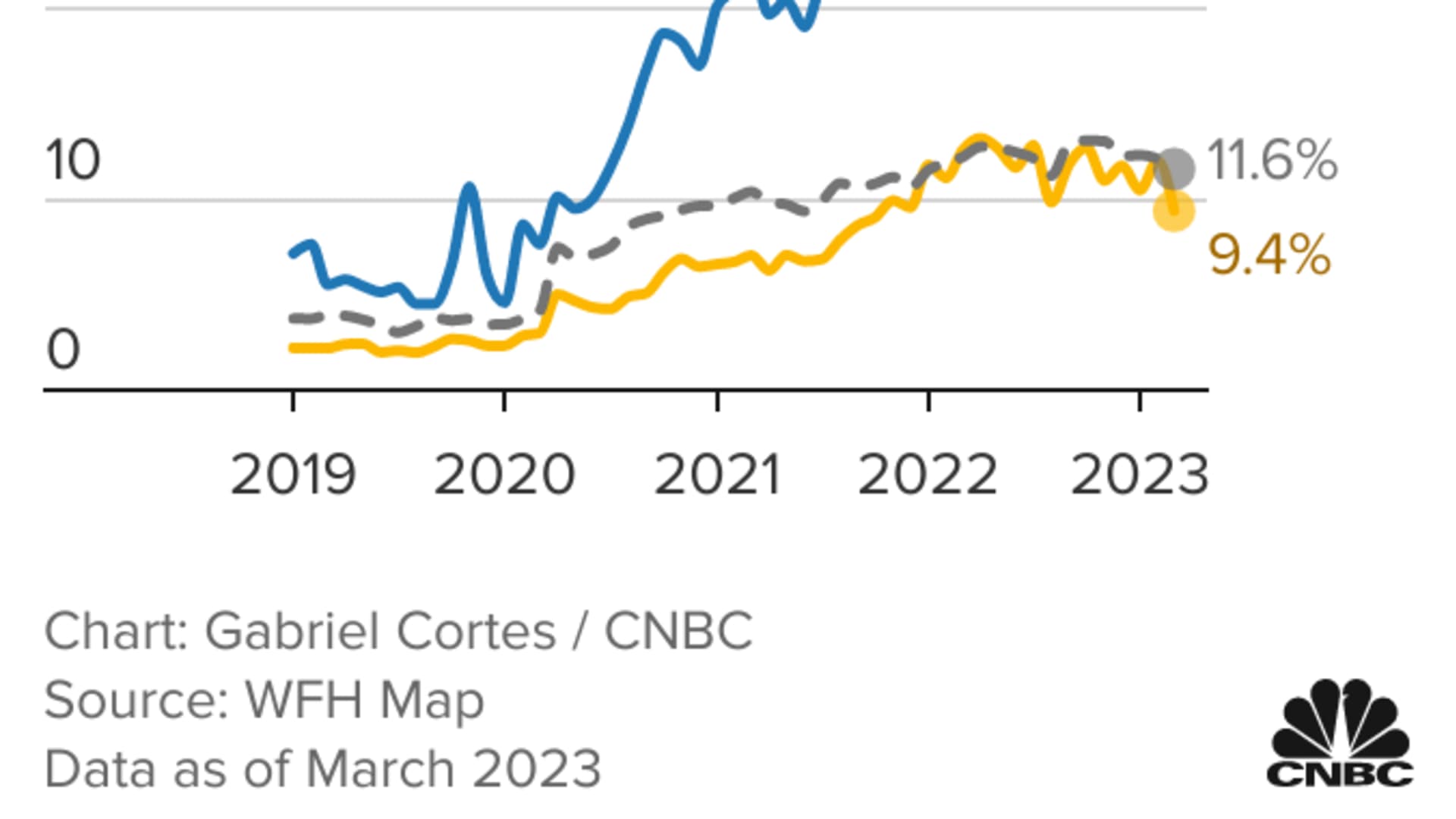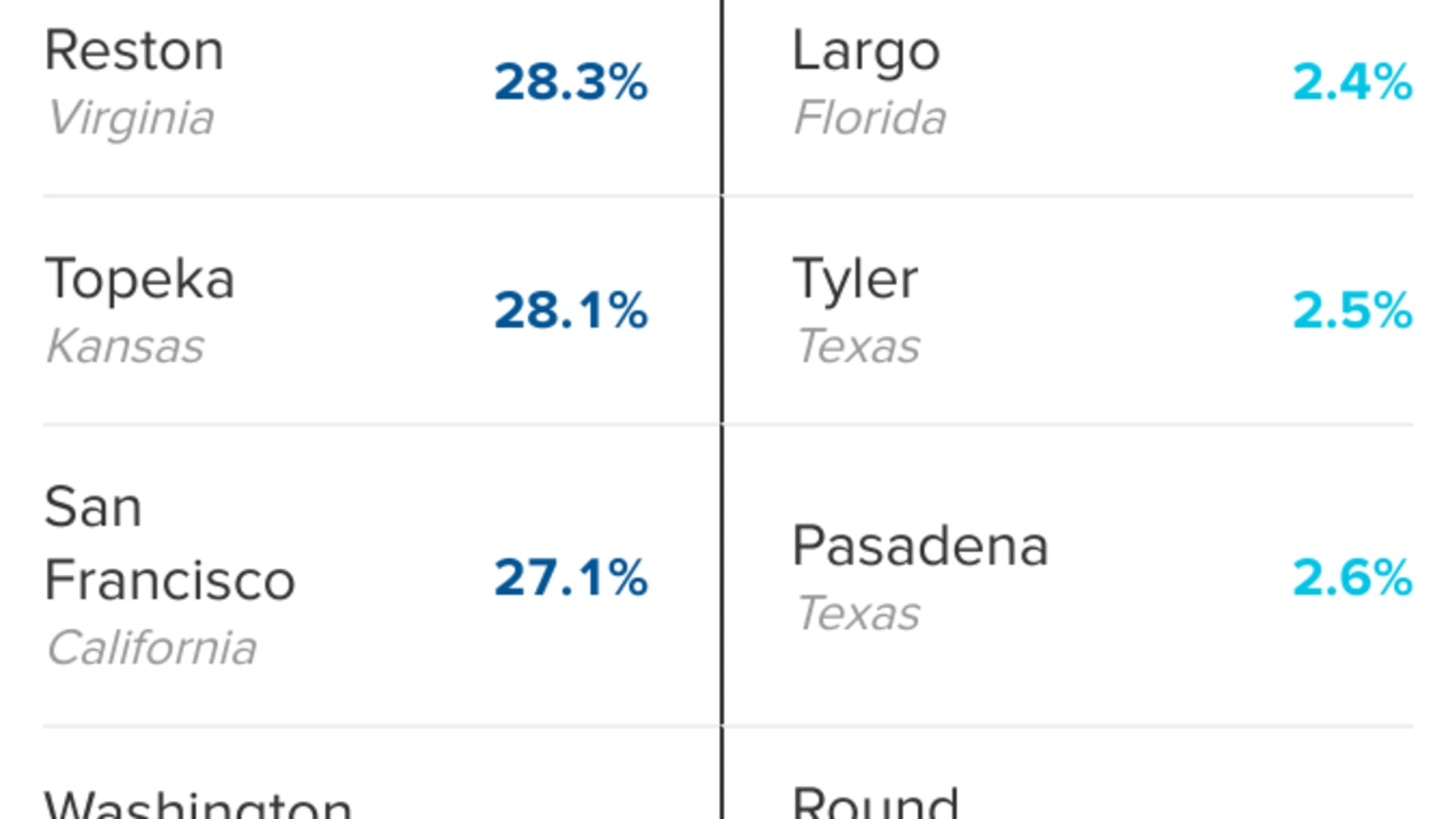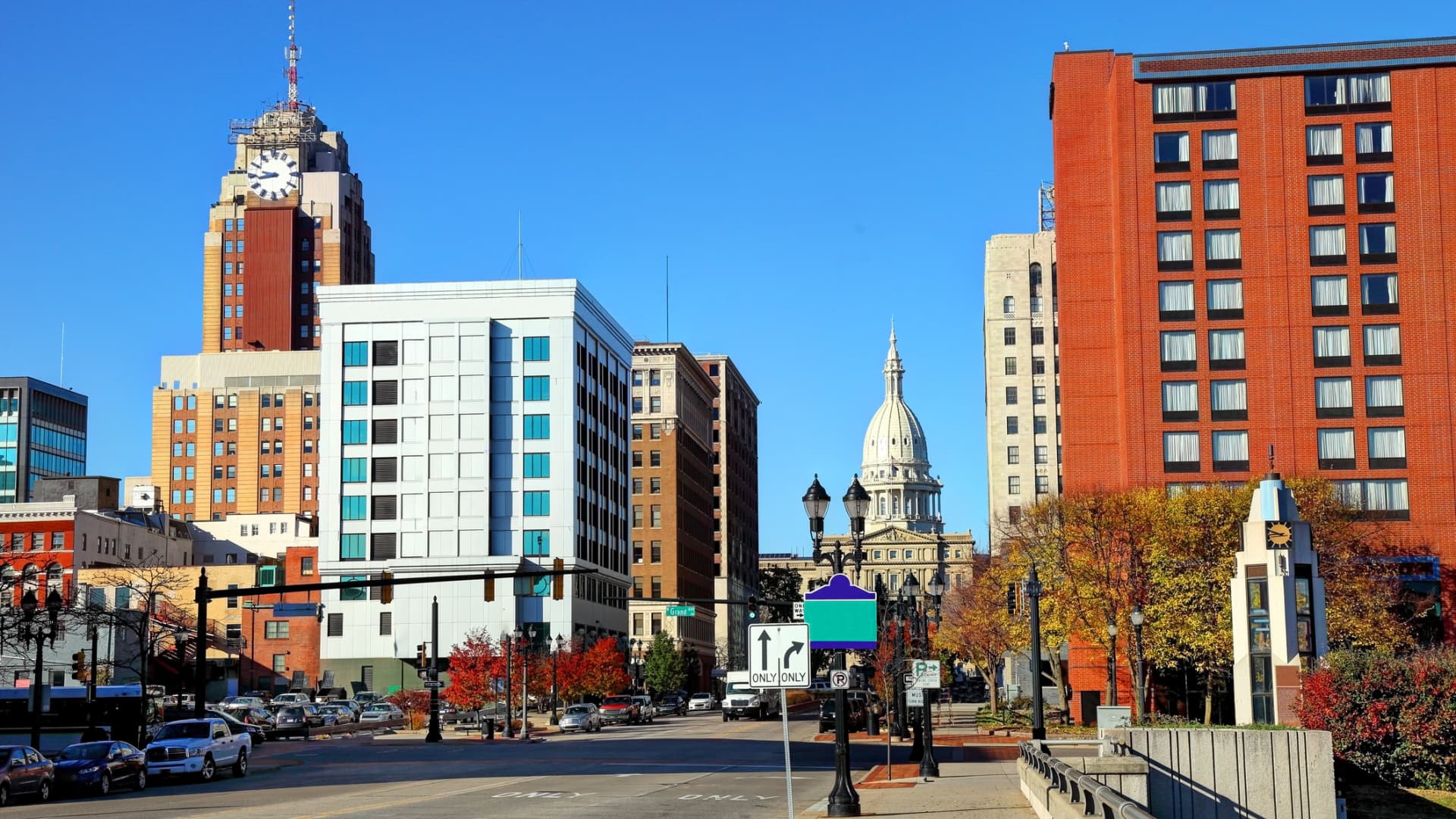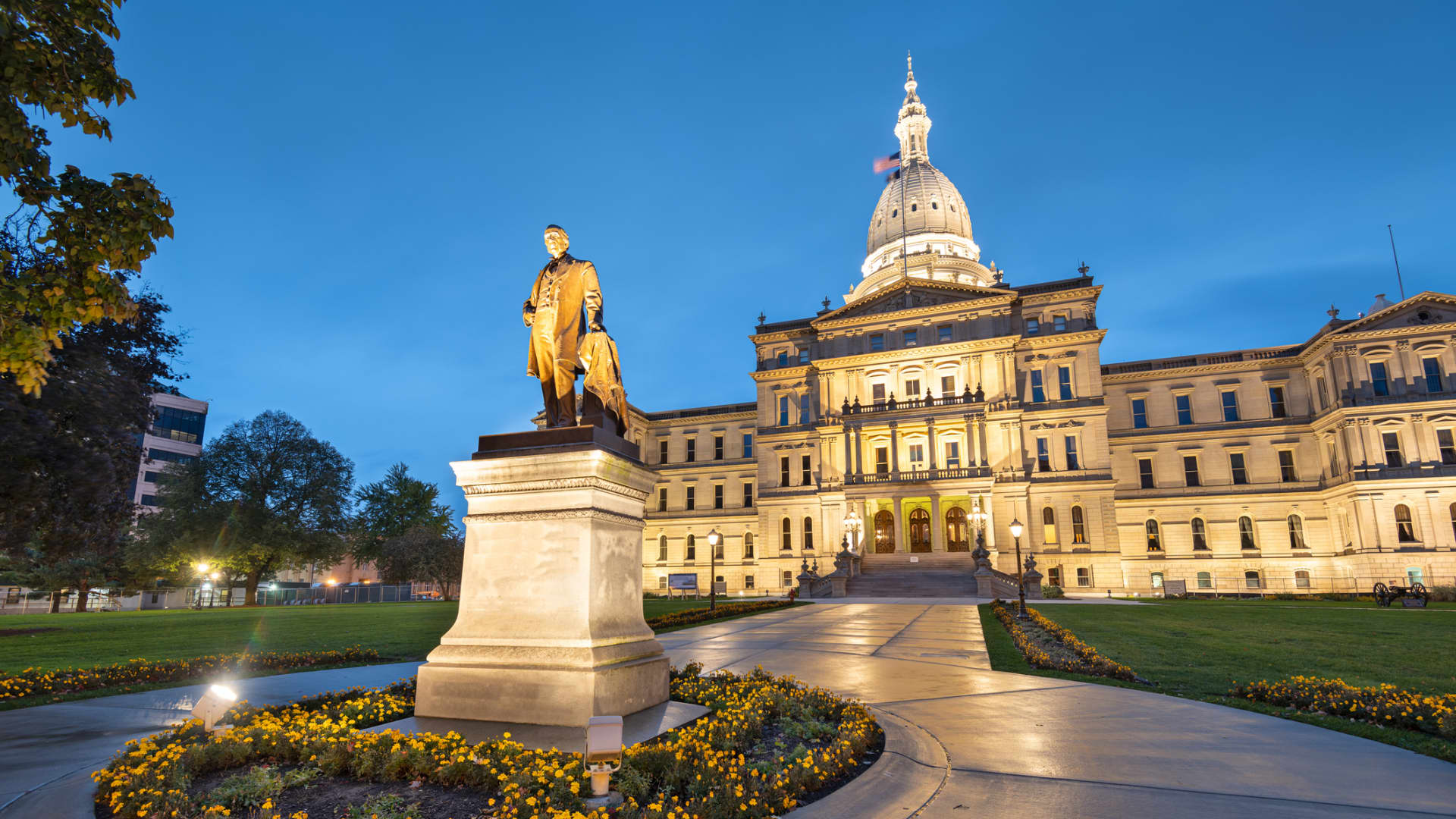
- It's been more than three years since the global pandemic sent workers accustomed to five-day, in-person work weeks away from offices.
- Many desk workers are still working from home for at least some of the week.
- The trend has, in turn, changed the aesthetic and culture of downtown centers across the country that could once rely on an influx of commuters, including Lansing, Michigan.
Lansing, Michigan may never be the same. The city of just over 110,000 residents, known for its towering state capitol building, large convention center and proximity to college campuses, is trying to reshape itself for a post-Covid world.
It's been more than three years since the global pandemic sent workers accustomed to five-day, in-person work weeks away from offices. Many desk workers are still working from home for at least some of the week. That's because remote and hybrid work models originally adopted as a short-term solution have shown staying power, even with the global public health emergency officially declared over.
The trend has, in turn, changed the aesthetic and culture of downtown centers across the country that could once rely on an influx of commuters. In Lansing, that change is seen in different work hours, more housing and new event spaces as community and business leaders try to reimagine what and who the downtown caters to. It's all being done in a bid to attract people to live or visit as reality sets in that Lansing and other cities can no longer thrive on office-centric economies.
Get Tri-state area news delivered to your inbox. Sign up for NBC New York's News Headlines newsletter.
"We are looking at how do we shift our energy from serving mainly one type of demographic, to making sure that our downtown neighborhoods are welcoming and inclusive of all?" said Cathleen Edgerly, executive director of Downtown Lansing, Inc., a nonprofit working on the culture and sustainability of the downtown. The goal is to build "the downtown and community for those who want to be there, not those who are just coming in and out as fast as they can."
'A rising tide'
Workers across the country have pushed to keep remote privileges even as executives at giant companies such as Disney to Tesla try to get their employees back into the office at least part time.
Money Report
A larger share of job listings across the country are offering at least one day of remote work compared with pre-pandemic, according to data from WFH Map in a collaboration between a group of researchers and Lightcast, a labor-market analytics firm. It's a sign that flexible work experiences remain increasingly normal — and not just for jobs started before or during the pandemic.
Lansing had the largest share of job listings in March with at least one day of remote work of any city, according to WFH Map. Founder Peter Lambert, an economic PhD candidate at the London School of Economics and Political Science, said capital cities and technology hubs tend to top the list given their tilt toward remote-friendly industries including tech, finance, insurance, higher education and government.
"Lansing is a great case study, as it ticks all the above boxes," he said.

In the downtown area, Edgerly said that initial shift meant a 30% overnight decrease in workers commuting in and over 1 million square feet of canceled office space with the onset of the pandemic. Since that shakeup, she said businesses have begun shifting hours to later in the evening and weekends as the economic focus moves away from commuters.
New community-oriented spaces are also popping up. Plans for two entertainment venues have been announced in hopes of attracting visitors on nights and weekends. And, the owner of a Detroit food hall opened a similar space in Lansing earlier this year.
About 40% of first-floor retail shops sat vacant at one point, but that number has been falling. That is, according to Edgerly, due in part to the success of a micro-market business incubator created to help merchants find a low-barrier place to operate in Lansing for a year. Of the past participants, Edgerly said all are still in business and about four out of every five have opened permanently in the city.
Between 300 and 400 residential housing units have also been added in the past few years, Edgerly said, as a comprehensive market analysis showed the need for more living spaces.

There still is tourism given that Lansing is Michigan's capital, though the city is not as large as others in the state such as Detroit. Around 115,000 people visit the capital each year, according to the government.
At the Impression 5 Science Center, a museum, executive director Erik Larson said his team started training with the local tourism bureau to better promote the other experiences available to tourists. He said the goal is that more visitors will want to come if they realize all their options in a trip to the city.
"It's a rising tide," he said. "We want the downtown core and beyond that to have a really strong, vibrant small business community."
State-wide initiatives such as the approval of outdoor business districts that allow the consumption of alcoholic beverages within their parameters have also helped build that economic fabric between businesses. A visitor or resident can now, for example, buy a beer to-go from a bar and peruse retail shops in one visit.
Other cities around the country are experiencing big changes as well.
In San Francisco, which has become somewhat of a national symbol for the office exodus, less than half of the number of workers commuting into the city before the pandemic came in on a weekly basis in the beginning of April, according to data from the city's Office of Workforce and Development. And an analysis by Bloomberg found remote work has cost Manhattan more than $12 billion annually.

'A better place'
Despite the progress, challenges remain for the local economy.
Karl Dorshimer, president of the Lansing Economic Development Corporation, said the biggest challenge for businesses is still a continued worker shortage in the retail and service sectors. Rising wages enticed some workers back but have not fully solved the issue, he said. (Lansing's unemployment rate is significantly lower than at the height of the pandemic, but it's still above where it sat before stay-at-home orders took effect in 2020.)
The cost of child care also remains a challenge, particularly for women in the local labor market, according to Keith Lambert, chief operating officer of the Lansing Economic Area Partnership. LEAP has helped start a coalition aimed at lowering child care costs after the issue's impact on the workforce became unmistakable during the pandemic.
Similarly, Lambert said large businesses are starting to think about their role in improving transportation in the region. A lack of parking has also hindered businesses and visitor interest downtown, according to multiple small business owners.
Economic development leaders and business owners alike note there's still room for progress. Mike Mahdi, owner of New Daily Bagel, said he still doesn't have enough foot traffic to support weekends, but he's noticed a better mix of street clothes and office attire among customers.

But those who've seen the downtown's ebbs and flows certainly recognize at least the first indications of a tide change. Stewart Powell, who has worked in the city for around four decades at Linn & Owen Jewelers, said he's seen the shift away from Lansing acting as a "very large food court" to a more traditional city with a diverse mix of businesses and customers since the pandemic took hold.
"I believe that in the long run, this will end up being a better place," he said. "Not because of Covid, but in spite of Covid."






